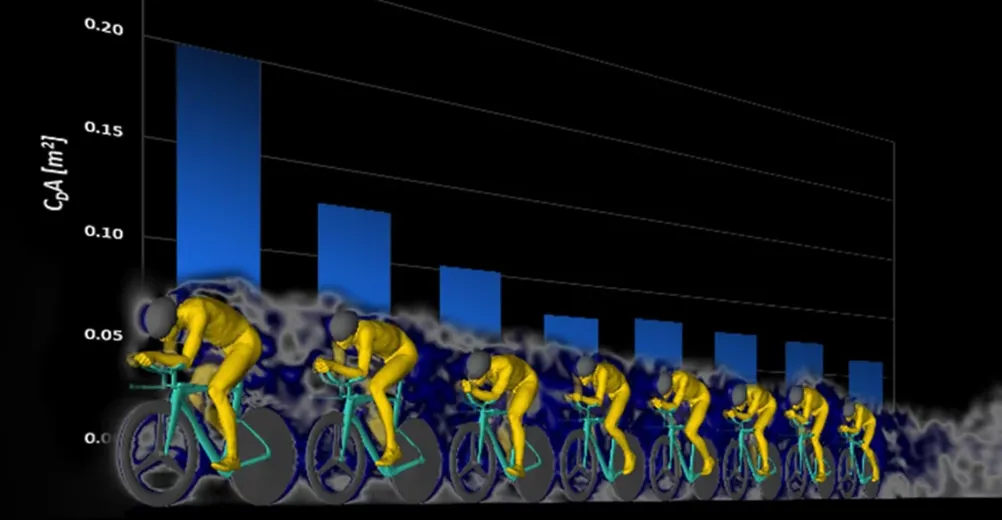
Data technology is now ubiquitous throughout the sporting world –from the ‘sabermetrics’ used in baseball, as portrayed in the film Moneyball, to technology such as optical tracking used across the football and basketball world. Data, and the acute insights it generates, is being used to revolutionise teams’ strategy and decision-making. Whole departments within sporting organisations are now dedicated to the tracking, recording, modelling and the implementation of data to give their teams every tool possible to gain an edge on the competition.
La Grande Boucle
This year’s Tour De France was no exception. The world-renowned race is one of sport’s most iconic events. In the cycling world, it is the pinnacle – a brutal race spanning over 2,220 miles. This year the race started in Copenhagen, moving through France, including nine mountain stages in the Alps and the Pyrenees, before concluding on the Champs-Elysees in Paris. Those who compete at the sharp end of the Tour are among the fittest athletes on Earth.
In order to win, huge amounts of training, determination, resilience and endurance are required. Teams also carefully study the route, terrain and potential weather conditions of every stage to determine where the optimal position in the pack is for the rider or when to break away. But all of this is not enough. Increasingly, data – and more specifically simulation – is playing an important role in giving teams an edge in their quest for glory.
Team Jumbo-Visma’s Tour de Force
This year, Team Jumbo-Visma put in an impressive display across both the men’s and women’s races with Jonas Vingegaard winning the men’s race, and Marianne Vos, winning the green jersey for most points and leading five stages in the women’s race. Both riders were among the favourites for their respective titles, however, for the men’s race Team Jumbo-Visma employed the extensive use of simulation to fully capitalise on the talent of Vingegaard to win La Grande Boucle.

Fighting air resistance represents up to 90% of the energy spent by the athletes. Team Jumbo-Visma works with some of the best athletic aerodynamics experts in the world, such as Professor Bert Blocken, Eindhoven University of Technology (TU/e) and KU Leuven, employing digital simulation to optimise performance through better aerodynamics. It consisted of solving vast, complex systems of equations with millions of unknowns to improve their performance. This then allowed them to:
- Investigate and adjust the position of its cyclists on their bikes to evaluate the level of drag on each member of the team, taking into account each cyclist’s body position and various wind conditions.
- Alter the relative positions of athletes in a group throughout the race to reduce the drag experienced by the cyclists.
- Assess the contribution of each component of the bike, the equipment, and the athlete to the overall performance of each rider.
Team Jumbo-Visma athletes’ bodies were scanned to ensure that their exact physical shapes were included in the simulation; full-size mannequins of two riders for use in the wind tunnel were even created. It is critical that the models that are formulated are highly accurate and validated by experimental measurements. This is because even a small variation can result in precious seconds being lost every kilometre, which can add up to significant deficits at the finish line. Once the optimal conditions were found, the team would use their findings to develop a strategy with the riders allowing them to maximise performance.
Science and athlete, winning together
Team Jumbo Visma’s motto is ‘Samen winnen’ (winning together). From the lead riders to their support riders, to the strategists, the trainers and their supporting partners, everyone contributes to the team’s success. Now though, simulation has proven to be a pivotal cog in the machine. From design, to manufacturing and performance, simulation has opened doors that have never been accessible.
Thanks to developments in technology, training in sports has become far more grounded in data. Outcomes can be predicted for multiple conditions, specific areas can be targeted for improvement, and slight adjustments can take seconds off a finishing time. As world records continue to be broken, it seems the future of sport will see technology further push the boundaries of human ability.

Thierry Marchal is Program Director at Ansys










Taking steps toward reindustrialisation
High value is not the same as high cost/price and does not need excessive automation. Appropriate and innovative manufacturing tools are what led (in...